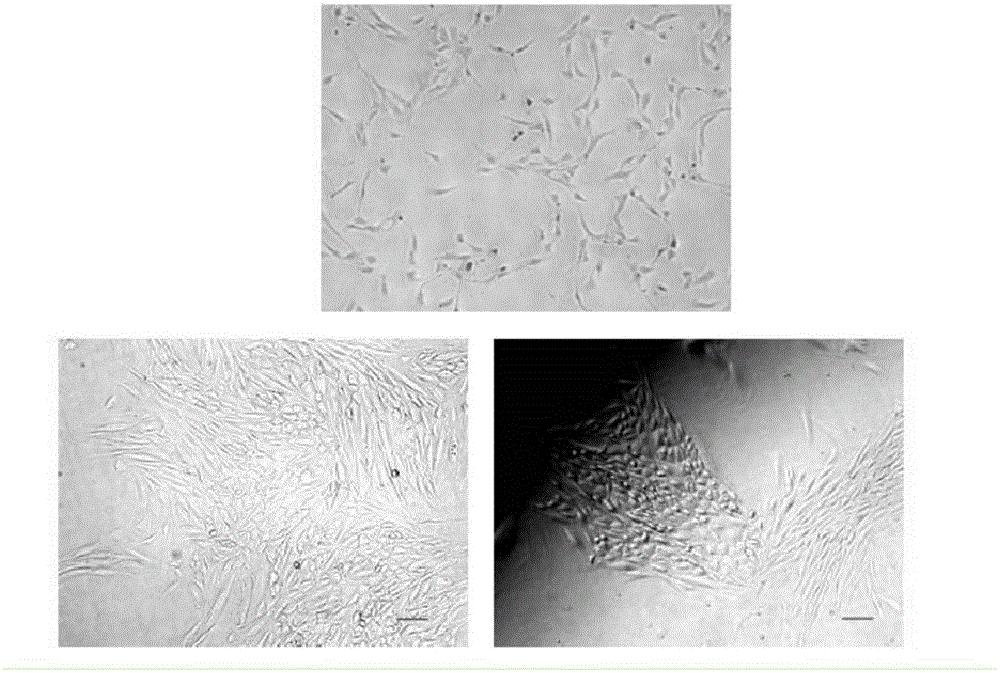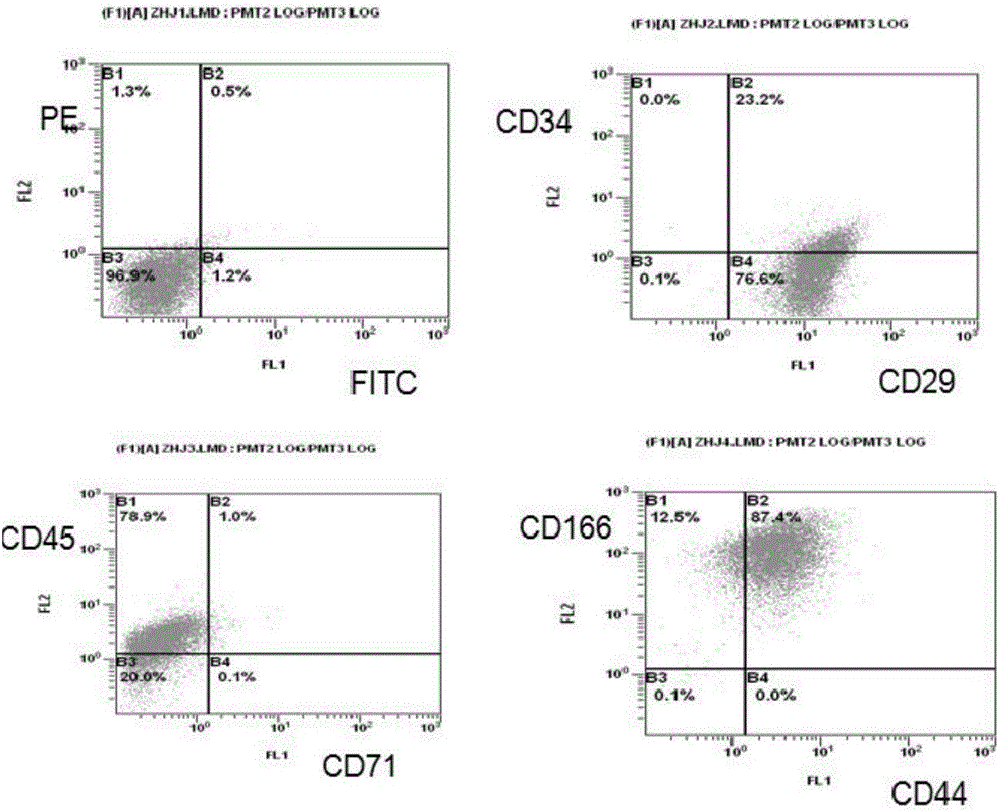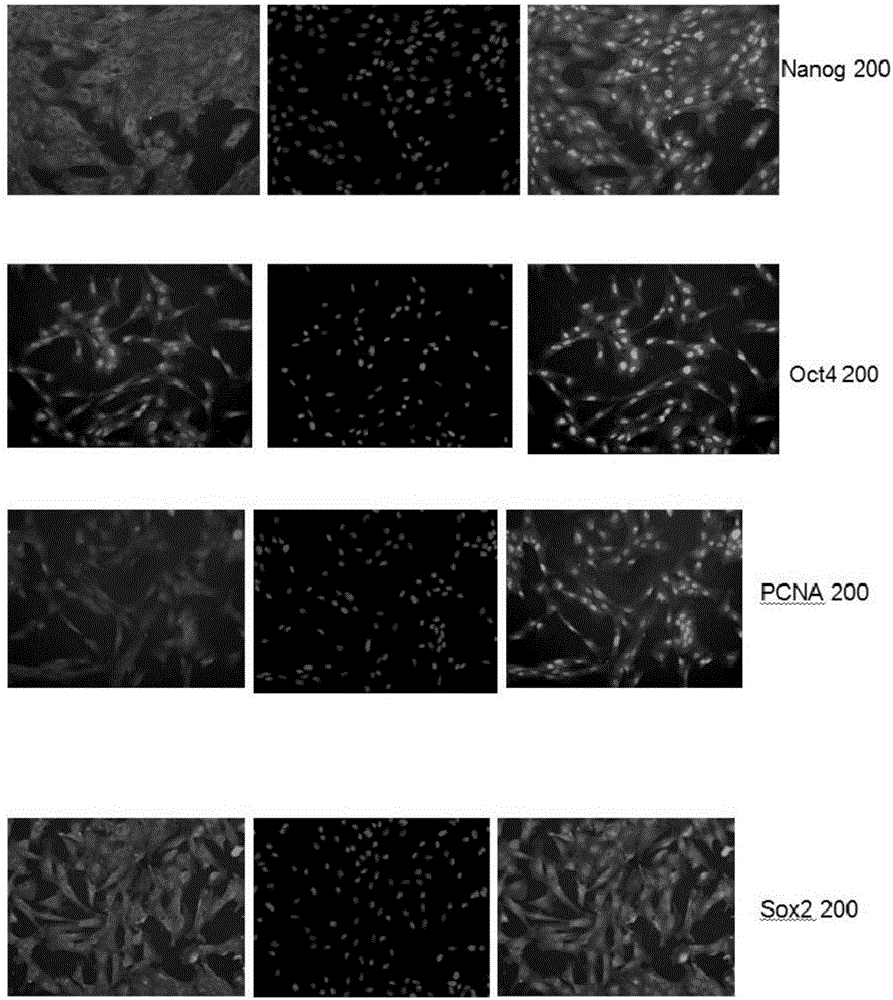Isolated culture and differentiation method for testicular mesenchymal stem cells
A technology for separation and culture of testicular mesenchyme, applied in the biological field, can solve the problems of lack of methods for mesenchymal stem cell separation, culture and differentiation, and achieve the effect of simple, effective and highly controllable methods
- Summary
- Abstract
- Description
- Claims
- Application Information
AI Technical Summary
Problems solved by technology
Method used
Image
Examples
Embodiment
[0023] A method for isolating, culturing and differentiating testicular mesenchymal stem cells, comprising the following steps:
[0024] Step 1: Digest the obtained testicular tissue with trypsin and DNase, then use an equal volume of DMEM / F12 and 10% FBS solution to terminate the enzyme digestion, centrifuge at room temperature at 300g*5min, discard the supernatant; use 5mL DMEM / F12 and 10% FBS solution to resuspend the cells, centrifuge at 300g*5min at room temperature, discard the supernatant, and then culture and expand;
[0025] Step 2, culturing the P4 generation cells to form embryoid bodies;
[0026] In step 3, the embryoid bodies are inoculated and differentiated.
Embodiment 2
[0028] A method for isolating, culturing and differentiating testicular mesenchymal stem cells, comprising the following steps:
[0029] Step 1, the method of separating the obtained testicular tissue in vitro is: digest the obtained testicular tissue with 2mg / mL collagenase, 20μg / mL DNase and 2mg / mL decomposing enzyme for 20min, and then use 1mg / mL trypsin and 10μg / mL Digest with mL DNase for 10 minutes, then stop the enzyme digestion with an equal volume of DMEM / F12 plus 10% FBS solution, centrifuge at 300g*5min at room temperature, discard the supernatant; resuspend the cells with 5mL DMEM / F12 plus 10% FBS solution, at room temperature 300g * Centrifuge for 5 minutes, discard the supernatant, and then culture and amplify;
[0030] Step 2: Digest the well-cultured P4 cells in step 1 with 0.25% trypsin, centrifuge at 300g*5min, resuspend in PBS buffer, and centrifuge at 300g*5min; resuspend with DMEM / F12 plus 10% FBS Cells were counted on a hemocytometer, and the cell densit...
Embodiment 3
[0033] A method for isolating, culturing and differentiating testicular mesenchymal stem cells, comprising the following steps:
[0034] Step 1, the method of separating the obtained testicular tissue in vitro is: digest the obtained testicular tissue with 2mg / mL collagenase, 20μg / mL DNase and 2mg / mL decomposing enzyme for 20min, and then use 1mg / mL trypsin and 10μg / mL Digest with mL DNase for 10 minutes, then stop the enzyme digestion with an equal volume of DMEM / F12 plus 10% FBS solution, centrifuge at 300g*5min at room temperature, discard the supernatant; resuspend the cells with 5mL DMEM / F12 plus 10% FBS solution, at room temperature 300g * Centrifuge for 5 minutes, discard the supernatant, and then culture and amplify;
[0035] Step 2: Digest the well-cultured P4 cells in step 1 with 0.25% trypsin, centrifuge at 300g*5min, resuspend in PBS buffer, and centrifuge at 300g*5min; resuspend with DMEM / F12 plus 10% FBS Cells were counted on a hemocytometer, and the cell densit...
PUM
 Login to View More
Login to View More Abstract
Description
Claims
Application Information
 Login to View More
Login to View More - R&D
- Intellectual Property
- Life Sciences
- Materials
- Tech Scout
- Unparalleled Data Quality
- Higher Quality Content
- 60% Fewer Hallucinations
Browse by: Latest US Patents, China's latest patents, Technical Efficacy Thesaurus, Application Domain, Technology Topic, Popular Technical Reports.
© 2025 PatSnap. All rights reserved.Legal|Privacy policy|Modern Slavery Act Transparency Statement|Sitemap|About US| Contact US: help@patsnap.com



